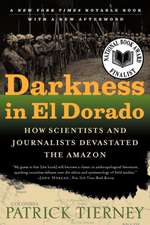Creative Economies in Post-Industrial Cities: Manufacturing a (Different) Scene
Editat de Myrna Margulies Breitbarten Limba Engleză Paperback – 28 noi 2016
| Toate formatele și edițiile | Preț | Express |
|---|---|---|
| Paperback (1) | 489.26 lei 6-8 săpt. | |
| Taylor & Francis – 28 noi 2016 | 489.26 lei 6-8 săpt. | |
| Hardback (1) | 1119.45 lei 6-8 săpt. | |
| Taylor & Francis – 23 iul 2013 | 1119.45 lei 6-8 săpt. |
Preț: 489.26 lei
Nou
Puncte Express: 734
Preț estimativ în valută:
93.62€ • 97.99$ • 77.92£
93.62€ • 97.99$ • 77.92£
Carte tipărită la comandă
Livrare economică 31 martie-14 aprilie
Preluare comenzi: 021 569.72.76
Specificații
ISBN-13: 9781138277083
ISBN-10: 1138277088
Pagini: 344
Dimensiuni: 156 x 234 x 35 mm
Greutate: 0.45 kg
Ediția:1
Editura: Taylor & Francis
Colecția Routledge
Locul publicării:Oxford, United Kingdom
ISBN-10: 1138277088
Pagini: 344
Dimensiuni: 156 x 234 x 35 mm
Greutate: 0.45 kg
Ediția:1
Editura: Taylor & Francis
Colecția Routledge
Locul publicării:Oxford, United Kingdom
Recenzii
’Myrna Margulies Breitbart’s book compiles a variety of examples that show how, with foresight, leadership, and an expansive view of creativity, arts and culture can transform the economies of even unexpected places. A vital counterpoint to the attention to creativity in mega-cities, this book makes an important contribution to our understanding of the economics of culture.’ Stuart Rosenfeld, Regional Technology Strategies, Inc, North Carolina, USA ’Breitbart’s book is a much needed resource to show how new creative economies can revitalize post-industrial cities that have been abandoned in the wake of globalization. Using real world examples, it describes what has worked and what hasn’t, and most important, it shows how even smaller cities can come together across lines of race, ethnicity, and class, to benefit both current residents and newcomers.’ Robert Goodman, author of After the Planners,The Last Entrepreneurs, and The Luck Business '... there certainly is a place for a collection such as this that offers a critical perspective on how smaller postindustrial cities enroll creative economy planning to envisage an alternative economic future. Moreover, Breitbart's contributions based on practice methodologies as well as her ability to critically engage material outcomes and urban theoretical debates in introducing this relevant urban issue make this edited volume worth examining.' AAG Review of Books
Cuprins
Chapter 1: Introduction: Examining the Creative Economy in Post-Industrial Cities: Alternatives to Blueprinting Soho; Part I: Exploring Alternatives to the Cultural “Buzz”; Chapter 2: Scale, Sociality and Serendipity in Providence, Rhode Island's Post-Industrial Renaissance; Chapter 3: “Lofty Artists” vs. “El Oro del Barrio”: Crafting Community and a Sustainable Economic Future in the Paper City; Chapter 4: From Post to Poster to Post-Industrial: Cultural Networks and Eclectic Creative Practice in Peterborough and Thunder Bay, Ontario; Chapter 5: Learning from the Post-Industrial Transition in Northern England: Alternative Developments in the Visual Arts (1979–2008); Chapter 6: Halo over Barnsley: Centering the Margins in the Transformation of a Former Mining Community; Part II: Moving Beyond Neoliberal Methodologies in the Study and Practice of Creative Economy Planning; Chapter 7: Creative Revitalization as a Community Affair; Chapter 8: Creative Communities and Everyone Else: Towards a Dialogic Understanding of Creativity after Liverpool's Capital of Culture Year; Chapter 9: Active Ageing: Creative Interventions in Urban Regeneration; Chapter 10: Access as the “Gorgeous Norm”: Creating Spaces that Inspire Ownership through Occupation; Chapter 11: Afterword: Moving towards “Creative Sustainability” in Post-Industrial Communities
Descriere
There has been much written on the new creative economy, but most work focuses on the so-called 'creative class,' with lifestyle preferences that favor trendy new restaurants, mountain biking, and late night clubbing. This 'creative class,' flagship cultural destinations, and other forms of commodity-driven cultural production, now occupy a relatively uncritical place in the revitalization schemes of most cities up and down the urban hierarchy. In contrast, this book focuses on small- to medium-size post-industrial cities in the US, Canada, and Europe that are trying to redress the effects of deindustrialization and economic decline through cultural economic regeneration.














